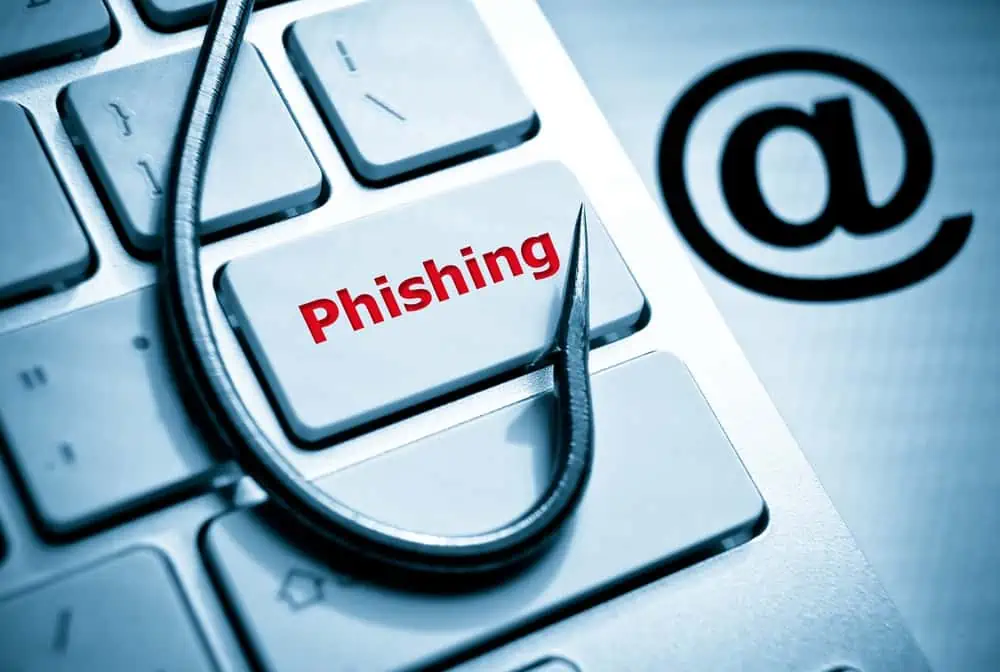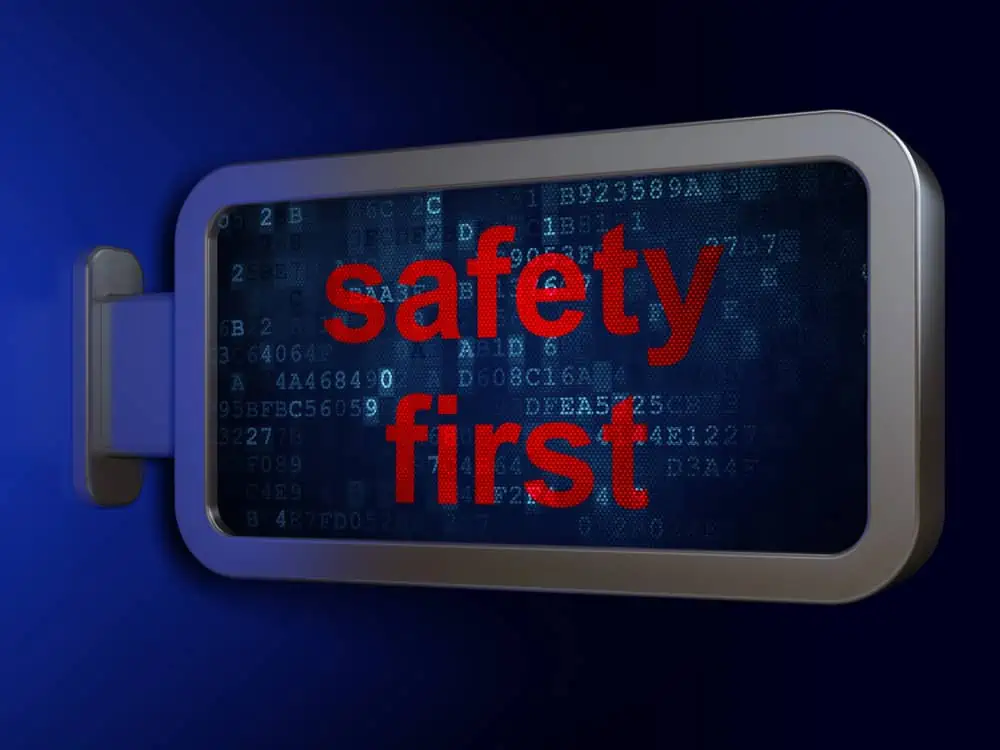In the world of cryptocurrency, one of the biggest threats that holders face is phishing. Phishing is a form of cyber attack where scammers attempt to trick individuals into revealing sensitive information, such as passwords or private keys, by posing as a trustworthy entity. This information can then be used to gain unauthorized access to cryptocurrency wallets and steal funds. With the rise in popularity of cryptocurrencies, phishing attacks have become increasingly prevalent, making it crucial for cryptocurrency holders to be aware of the risks and take steps to protect themselves.
Disclaimer: This information is general in nature and for informational purposes only. It is not personal financial advice and has not taken into account your personal financial position or objectives. Make sure to refer to a licensed financial or tax advisor.
Table of Contents
What is phishing and how does it threaten your cryptocurrency?
Phishing is a type of cyber attack that involves tricking individuals into divulging sensitive information by posing as a legitimate entity. This is typically done through email, where scammers send out messages that appear to be from reputable sources, such as cryptocurrency exchanges or wallet providers. These emails often contain links to fake websites that are designed to look identical to the real ones. When users click on these links and enter their login credentials or other sensitive information, the scammers are able to capture this data and use it to gain unauthorized access to their accounts.
Phishing poses a significant threat to cryptocurrency holders because it can lead to the loss of funds. Once scammers have obtained login credentials or private keys, they can easily transfer the funds out of the victim’s wallet and into their own. Since transactions made with cryptocurrencies are irreversible, there is little recourse for victims once their funds have been stolen. This makes it crucial for cryptocurrency holders to be vigilant and take steps to protect themselves from phishing attacks.
The anatomy of a phishing scam: how to spot the red flags.
Phishers use a variety of tactics to trick individuals into revealing their sensitive information. One common tactic is creating emails or websites that mimic those of legitimate entities. These emails often contain urgent requests for users to update their account information or verify their identity. They may also include links to fake websites that are designed to look identical to the real ones. These websites often have URLs that are very similar to the legitimate ones, but with slight variations that can be easily overlooked.
There are several red flags that can help individuals identify phishing attempts. One of the most obvious signs is poor grammar or spelling mistakes in the email or website. Legitimate entities typically have professional communications and would not make such errors. Another red flag is a sense of urgency in the email or website. Phishers often try to create a sense of panic or urgency in order to pressure individuals into taking immediate action without thinking it through. Additionally, individuals should be wary of emails or websites that ask for sensitive information, such as passwords or private keys. Legitimate entities would never ask for this information via email.
Common types of phishing attacks and how to protect yourself.
There are several different types of phishing attacks that individuals should be aware of. One common type is spear phishing, where scammers target specific individuals or organizations. These attacks are often more sophisticated and personalized, making them harder to detect. Another type is clone phishing, where scammers create a replica of a legitimate email and replace a link or attachment with a malicious one. This can be particularly dangerous because the email appears to be from a trusted source.
To protect yourself from phishing attacks, it is important to be cautious and skeptical of any emails or websites that ask for sensitive information. Always double-check the URL of a website before entering any login credentials or other sensitive data. If you receive an email that seems suspicious, do not click on any links or download any attachments. Instead, go directly to the website in question by typing the URL into your browser and log in from there.
Don’t take the bait: tips for avoiding phishing scams.
There are several best practices that individuals can follow to stay safe online and avoid falling victim to phishing scams. First and foremost, it is important to be cautious and skeptical of any emails or websites that ask for sensitive information. Legitimate entities would never ask for this information via email, so it is important to be wary of any requests for passwords, private keys, or other sensitive data.
Another important tip is to always double-check the URL of a website before entering any login credentials or other sensitive information. Phishers often create fake websites with URLs that are very similar to the legitimate ones, so it is important to carefully examine the URL to ensure that it is correct. Additionally, individuals should be cautious when clicking on links in emails or other messages. It is always best to go directly to the website in question by typing the URL into your browser.
The importance of two-factor authentication in preventing phishing attacks.
Two-factor authentication (2FA) is an additional layer of security that can help protect against phishing attacks. With 2FA, users are required to provide two forms of identification in order to access their accounts. This typically involves entering a password and then providing a second piece of information, such as a unique code that is sent to their mobile device.
The use of 2FA can help prevent phishing attacks because even if scammers are able to obtain a user’s login credentials, they would still need access to the second form of identification in order to gain unauthorized access to the account. This adds an extra layer of security and makes it much more difficult for scammers to successfully carry out their attacks.
How to secure your cryptocurrency wallets from phishing attempts.
Securing your cryptocurrency wallets is crucial in protecting them from phishing attempts. One important step is to ensure that you are using a reputable wallet provider. Do your research and choose a wallet provider that has a good reputation and strong security measures in place.
It is also important to keep your private keys safe. Private keys are essentially the passwords that allow you to access your cryptocurrency. They should never be shared with anyone and should be stored securely. Consider using a hardware wallet, which is a physical device that stores your private keys offline and provides an extra layer of security.
The role of anti-virus software in protecting your cryptocurrency from phishing attacks.
Anti-virus software plays a crucial role in protecting your cryptocurrency from phishing attacks. It can help detect and block malicious software that may be used by phishers to gain unauthorized access to your accounts. It is important to choose a reputable anti-virus software and keep it up to date to ensure that you have the latest protection against emerging threats.
There are several anti-virus software options available, both free and paid. Some popular options include Norton, McAfee, and Avast. It is important to choose a software that fits your needs and provides the level of protection that you require.
The dangers of public Wi-Fi and how to stay safe when accessing your cryptocurrency.
Using public Wi-Fi can pose significant risks when it comes to accessing your cryptocurrency. Public Wi-Fi networks are often unsecured, meaning that any data transmitted over these networks can be intercepted by hackers. This includes login credentials and other sensitive information that could be used to gain unauthorized access to your accounts.
To stay safe when accessing your cryptocurrency on public Wi-Fi, it is important to use a virtual private network (VPN). A VPN creates a secure connection between your device and the internet, encrypting all data transmitted over the network. This helps protect your sensitive information from being intercepted by hackers.
What to do if you fall victim to a phishing scam: steps for recovery.
If you realize that you have fallen victim to a phishing scam, it is important to take immediate action to minimize the damage. The first step is to change all passwords associated with your accounts, including email, cryptocurrency wallets, and any other accounts that may have been compromised.
Next, you should contact the relevant authorities to report the incident. This may include local law enforcement, as well as the cryptocurrency exchange or wallet provider that was targeted. They may be able to provide assistance in recovering your funds or taking steps to prevent further damage.
Staying vigilant: best practices for protecting your cryptocurrency from future phishing attempts.
Staying vigilant is crucial in protecting your cryptocurrency from future phishing attempts. It is important to always be cautious and skeptical of any emails or websites that ask for sensitive information. Legitimate entities would never ask for this information via email, so it is important to be wary of any requests for passwords, private keys, or other sensitive data.
Additionally, it is important to keep all software and applications up to date. Developers often release updates that include security patches and bug fixes, so it is important to install these updates as soon as they become available. This will help ensure that you have the latest protection against emerging threats.
In conclusion, phishing poses a significant threat to cryptocurrency holders and it is crucial to take steps to protect yourself. By being cautious and skeptical of any emails or websites that ask for sensitive information, using two-factor authentication, securing your cryptocurrency wallets, using anti-virus software, being cautious when using public Wi-Fi, and staying vigilant, you can greatly reduce the risk of falling victim to a phishing scam. It is important to stay informed about the latest phishing tactics and best practices for staying safe online in order to protect your cryptocurrency from future attacks.




